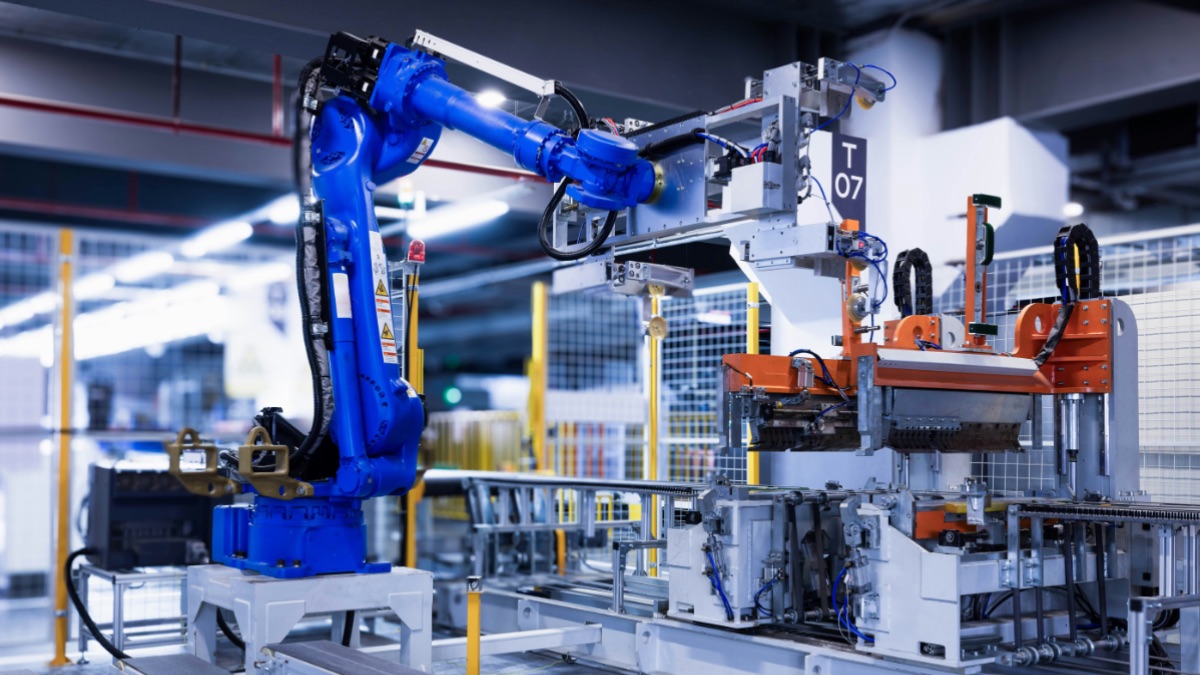Most robots today aren’t the general-purpose humanoids dreamed up by sci-fi visionaries. Instead, they’re task-specific industrial tools. Why? Simple economics.
Imagine you’re looking to automate a human-staffed automobile factory. There are two ways you could go about it. The first entails designing machines that work within the assembly line’s constraints — i.e., general-purpose automatons that can skillfully navigate real-world contingencies.
These machines would need to respect the factory’s affordances and other agents in the environment. Because of this, they’d have to replicate human capabilities: similar sensing and actuation mechanisms, similar cognitive abilities, similar communication channels, etc. They’d need to switch tasks on-the-fly to perform different jobs as needed.
This is the dream, and there are companies working to make it real. But there’s a problem: humans are very complex. Building one-to-one replacements is challenging with today’s technologies. A factory staffed with humanoids would require huge investments before the first automobile rolled off the line. But more to the point, it’s unnecessary: the goal is cheap cars, not cool robots.
A smarter approach entails redesigning the assembly line to constrain conditions so simpler machines can do specific jobs: transporting components, welding panels, painting doors, etc. By choreographing several simpler robots, you can have an efficient and cost-effective assembly line. This is, in fact, how most cars are built today.
Even if technologies afforded fully agentic humanoid workers, it’s unclear such an assembly line would be more efficient. At the risk of over-generalizing, here’s a simple design principle: Re-architecting workflows for simple agents costs less than engineering complex agents for existing workflows.
Of course, this assumes stable, predictable inputs and outputs. The automobile plant takes in particular materials in specific quantities at predefined cadences and outputs consistent products — a scenario that offers little leeway for variation. Not all industries fit this description. Still, there are cheaper ways to introduce flexibility than using general-purpose automatons.
Now, map this principle onto knowledge work. Many organizations are betting on AI to replace humans. But as with the humanoid factory worker, the technology isn’t quite there yet. Yes, there are some neat demos. Yes, agentic systems can automate complex tasks. But most of these systems operate within tightly constrained conditions and can’t autonomously replace human workers.
And that’s ok. As with the assembly line, fully autonomous, flexible agents are unnecessary in most scenarios. Many workflows can be made more efficient by “rearchitecting the line” around the constraints and capabilities of simpler AIs (such as LLMs) rather than via hypothetical superintelligent agents. Mindfully structured workflows can get you pretty far at a fraction of the cost.
And in any case, why mimic humans — at great expense — when LLMs offer unique capabilities? By analogy, robot arms can be much stronger than human arms, have more degrees of motion, move with greater precision, and repeat motions endlessly without boredom or injury. Conversely, most don’t need the delicate sensory capabilities of human skin or the nuanced motions of fingers.
Which is to say, artificial systems are more capable than humans in some ways and less so in others. Where humans have an indisputable edge is in their flexibility. A person can take on many different tasks and serve different roles — including some they weren’t asked to do. It’ll be a long time before AIs can catch up with human flexibility and initiative. In the meantime, organizations aspiring to implement general-purpose systems will pay an onerous — and often unnecessary — “flexibility tax.”
When considering AI optimizations, start by understanding your organization’s knowledge pipelines — i.e., how information flows through the org. When you do, you’ll recognize opportunities to automate processes in cost-effective ways. You’ll also recognize opportunities to get rid of processes. No reason to automate things that shouldn’t be happening at all!
As with industrial flows, using AI to automate knowledge work is more cost-effective if you “rearchitect the line” — i.e., constrain variances, standardize interfaces, provide predictable inputs, etc. Yes, AGI might make it all obsolete. But AGI doesn’t exist yet, and LLMs are already powerful enough to serve as “robot arms” that boost your knowledge pipelines.
This post first appeared on unfinshe_ thoughts
